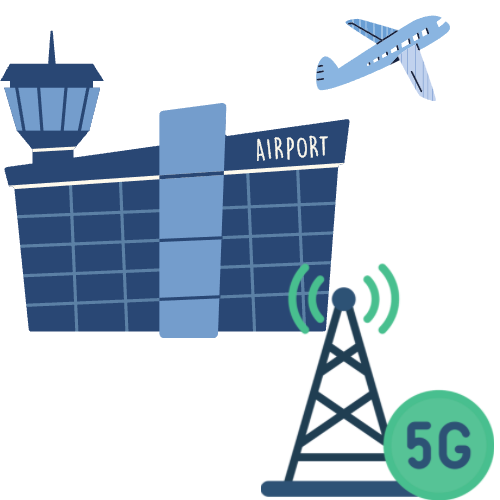
The FAA and cellular carriers, AT&T and Verizon, agreed to minimize their new 5G coverage using the C-Band frequency. A statement was recently released by the FAA that buffer zones have been set up for the coming 5G C-Band deployment. These airport locations will have temporary zones placed to protect them from potential interference from the 5G signals – aviation experts have found possible risks related to aircraft tools.
According to the FAA, 5G services on the C-Band are still set to launch on Jan. 19. They will continue the rollout with these limitations in place for at least 6 months. Only time will tell if more delays are to be seen, but thankfully 5G testing in other countries, using the same frequencies in the C-Band, have not reported any interference issues.
There are currently 50 airports on the FAA’s buffer zone list. The airports were selected based on traffic volume, the number of low-visibility days, and geographic location. There was also input from people in the aviation community. The list includes airports of any size, some of which are documented below:
- Austin-Bergstrom International Airport
- Charlotte Douglas International Airport
- Chicago Midway
- Chicago O’Hare
- Dallas-Fort Worth International Airport
- Dallas Love Field
- Detroit Metropolitan Airport
- George Bush Intercontinental Airport (Houston, Texas)
- John F. Kennedy International Airport
- John Wayne Airport (Orange County, Calif.)
- LaGuardia Airport
- Los Angeles International Airport
- Miami International Airport
- Minneapolis–Saint Paul International Airport
- Newark Liberty International Airport
- Philadelphia International Airport
- Phoenix Sky Harbor International Airport
- San Francisco International Airport
- Norman Y. Mineta San Jose International Airport
- Seattle–Tacoma International Airport
- William P. Hobby Airport (Houston, Texas)
Over the next 6 months, FAA officials say they will continue to work with airline companies and manufacturers to verify how the radar altimeters (the tools which may be affected by interference) will perform in this new environment.


